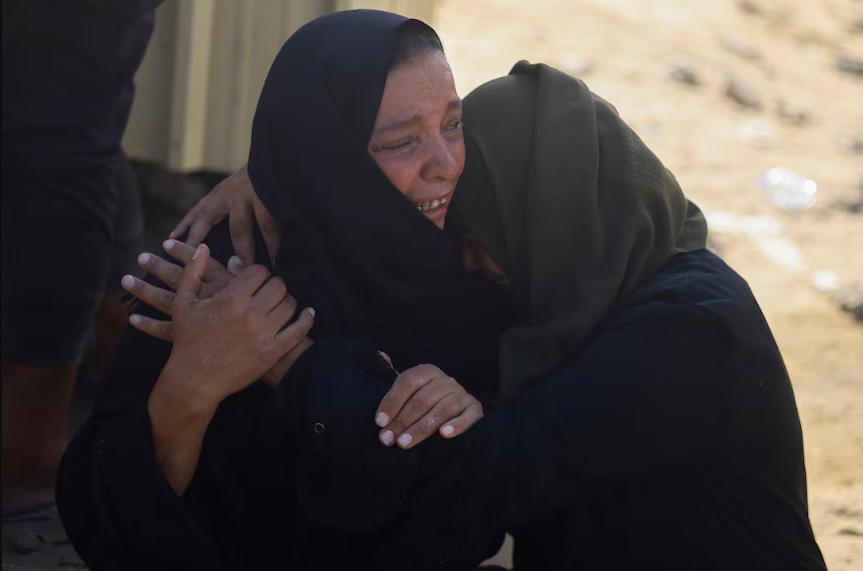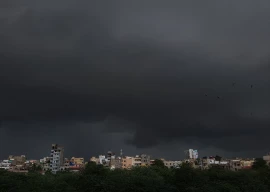
Palestinian health authorities say Israel's ground and air campaign in Gaza has killed more than 39,000 people, mostly civilians, and driven most of the enclave's 2.3 million people from their homes.
The war began on Oct. 7 when Hamas militants stormed across the border into Israeli communities. Israel says the militants killed more than 1,200 people, mostly civilians, and took 253 into captivity in Gaza.
The official Health Ministry count as of Thursday, July 25, was 39,175 Palestinian dead.
This explainer examines how the Palestinian toll is calculated, how reliable it is, the breakdown of civilians and fighters killed and what each side says.
How do Gaza Health Authorities Calculate the Death Toll?
In the first months of the war, death tolls were calculated entirely from counting bodies that arrived in hospitals and data included names and identity numbers for most of those killed.
As the conflict ground on, and fewer hospitals and morgues continued to operate, the authorities adopted other methods too.
From early May, the Health Ministry updated its breakdown of total fatalities to include unidentified bodies which account for nearly a third of the overall toll. Omar Hussein Ali, head of the ministry's emergency operations centre in the Israeli-occupied West Bank, said these were bodies that had arrived at hospitals or medical centres without personal data such as identity numbers or full names.
It also began including deaths reported online by family members who had to input information including identity numbers.
Is the Gaza Death Toll Comprehensive?
The numbers do not necessarily reflect all victims as many are still missing under the rubble, the Palestinian Health Ministry says. In May it estimated that some 10,000 bodies were uncounted in this way.
The Lancet medical journal published a letter from three academics on July 5 estimating that indirect deaths, caused by factors like disease, might mean the death toll is several times higher than official estimates and possibly above 186,000.
The authors said the figure, which made global headlines, was based on what they said was the conservative estimate of four indirect deaths to one direct death based on trends from prior conflicts.
The UN human rights office and the Humanitarian Research Lab at the Yale School of Public Health have also said that the true figures are likely higher than those published, without giving specifics.
How Credible is the Gaza Death Toll?
Pre-war Gaza had robust population statistics and better health information systems than in most Middle East countries, public health experts told Reuters.
A study this week by London-based Airwars – a non-profit compiling detailed lists of casualties from open source material - found a correlation of at least 75% between its lists and those of Gazan authorities for thousands of people killed in the early weeks of the war.
The watchdog's director Emily Tripp said there had since been a degradation of the accuracy but that the "core gathering of names was still strong".
The United Nations regularly cites the ministry's death toll figures, while naming the ministry as the source, and the World Health Organization has voiced full confidence in them.
Early in the conflict, after US President Joe Biden cast doubt on casualty figures, the health ministry published a detailed list of the 7,028 deaths that had been registered by that point. On July 24 it released a new list of the names of the 28,185 identified victims up to end June.
Specific questions remain, however, over the inclusion of 471 people said to have been killed in an Oct. 17 blast at al-Ahli al-Arab hospital in Gaza City. An unclassified US intelligence report estimated that death toll "at the low end of the 100 to 300 spectrum".
Does Hamas Control the Figures?
While Hamas has run Gaza since 2007, the enclave's Health Ministry also answers to the overall Palestinian Authority ministry in Ramallah in the West Bank.
Gaza's Hamas-run government has paid the salaries of all those hired in public departments since 2007, including in the Health Ministry. The Palestinian Authority still pays the salaries of those hired before then.
The extent of Hamas control in Gaza now is difficult to assess with Israeli forces occupying most of the territory, including around locations of hospitals that provide casualty figures, and with fighting ongoing.
What Does Israel Say?
Israeli officials have said the figures are suspect because of Hamas' control over government in Gaza. Foreign Ministry spokesperson Oren Mamorstein said the numbers were manipulated and "do not reflect the reality on the ground".
However, Israel's military has also accepted in briefings that the overall Gaza casualty numbers are broadly reliable.
In May, Israeli Prime Minister Benjamin Netanyahu said 14,000 Hamas fighters and 16,000 Palestinian civilians had been killed in the war.
How Many Civilians Have Been Killed?
The Health Ministry figures do not differentiate between civilians and Hamas combatants, who do not wear formal uniform or carry separate identification.
Israel periodically provides estimates of how many Hamas fighters it believes have been killed. The most recent was Netanyahu's estimate of 14,000.
Israeli security officials say such estimates are reached through a combination of counting bodies on the battlefield, intercepts of Hamas communications and intelligence assessments of personnel in targets that were destroyed.
Hamas has said Israeli estimates for its losses are exaggerated but has not said how many of its fighters have been killed. The Airwars analysis found that at least "some militants" were included in the Health Ministry's list.
The Palestinian Health Ministry has estimated for most of the conflict that around 70% of the dead are women and children.












1722244248-0/tlprrt-(1)1722244248-0-270x192.webp)







COMMENTS
Comments are moderated and generally will be posted if they are on-topic and not abusive.
For more information, please see our Comments FAQ